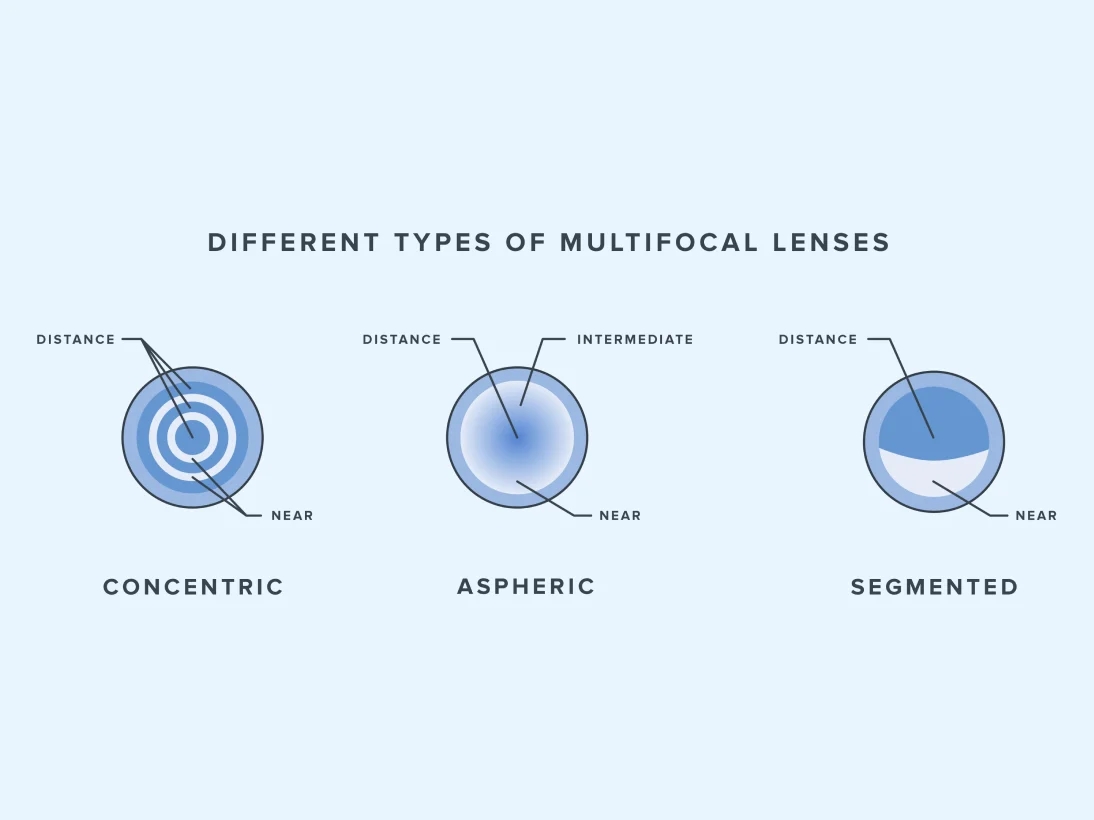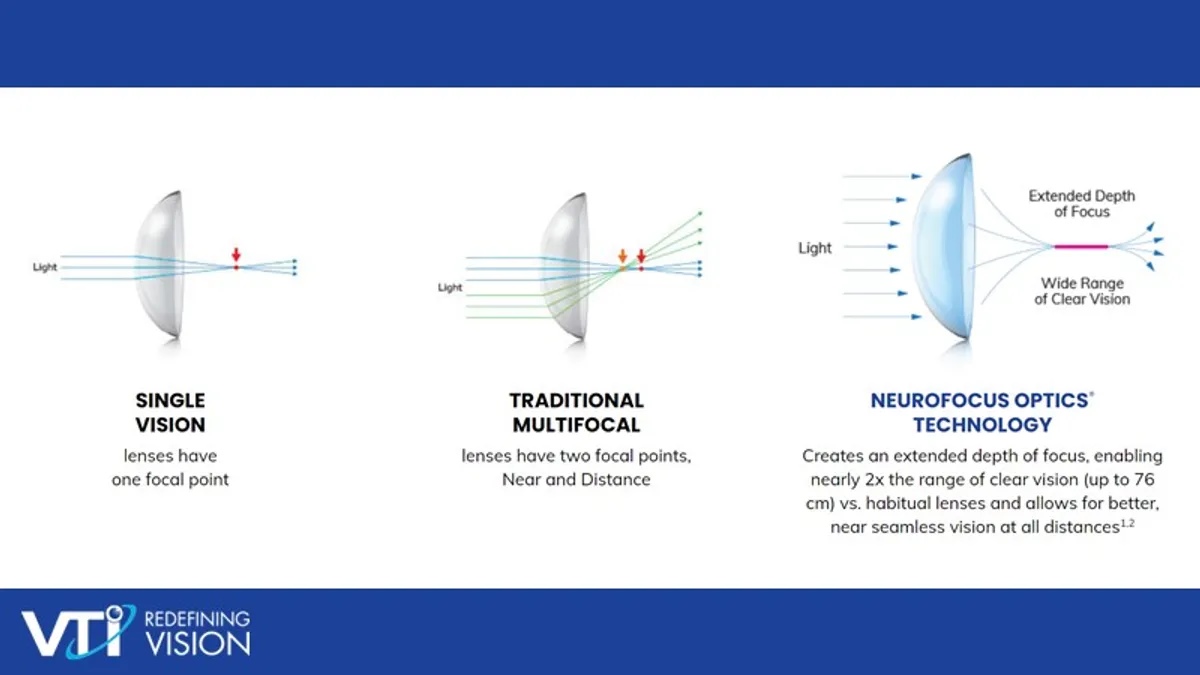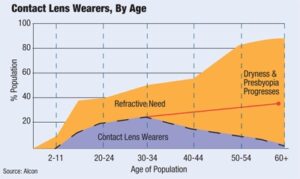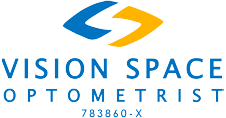Presbyopia is a common age-related vision problem that gradually diminishes the eye’s ability to focus on close objects, affecting virtually everyone to some degree by the age of 40. This natural decline in the eye’s focusing ability can significantly impact daily activities, making tasks such as reading, using a smartphone, or any close work increasingly difficult. The onset of presbyopia marks a pivotal moment in an individual’s life, where the clarity of vision that was once taken for granted begins to fade, necessitating vision correction to maintain quality of life and independence in performing near tasks [2][4].
Enter multifocal lenses, a groundbreaking solution that has revolutionized addressing presbyopia. Unlike traditional single-vision lenses, which only correct distance vision, multifocal lenses are designed to provide clear vision at multiple distances. These innovative lenses come in various forms, including bifocal contact lenses, soft multifocal contacts, and rigid gas permeable (RGP) lenses, as well as multifocal intraocular lenses (IOLs) for those who have undergone cataract surgery. By incorporating different lens powers within a single lens, multifocal contact lenses enable individuals to see clearly across different distances, from reading a book to recognizing a friend across the street. This seamless transition between near and far vision correction enhances visual acuity. It offers a more natural visual experience, closely mimicking the eye’s natural focusing ability before the onset of presbyopia [1][3].
The advent of multifocal contact lenses represents a significant leap forward in presbyopia correction, offering a versatile and effective solution that caters to the diverse visual needs of the aging population. As we explore the world of multifocal contact lenses, we delve into how this innovative technology has transformed the lives of those with presbyopia, enabling them to experience the world in high definition once again [1][3].
The Technology Behind Multifocal and Progressive Contact Lenses
Multifocal contact lenses represent a significant advancement in optical technology designed to address the limitations of traditional bifocal or single-vision lenses. Traditional lenses typically correct either near or distance vision, requiring individuals with presbyopia to switch between glasses for various tasks. Multifocal lenses, however, are engineered with multiple prescription zones built into a single lens, allowing for a smooth transition between near, intermediate, and distance vision without the need for multiple pairs of glasses. Integrating multiple prescriptions in one lens showcases the convenience and innovation of multifocal technology [5][6]. This innovative approach is also mirrored in progressive eyeglasses, which blend lens powers seamlessly, eliminating the visible lines seen in traditional bifocals.
The technology behind multifocal contact lenses is quite sophisticated. These lenses are constructed with a gradient of lens powers, carefully calibrated to provide clear vision at all distances. The design can vary from concentric rings of different powers to a progressive blend without distinct zones. This allows the wearer to look at 3 different distances comfortably [5][6].
There are several types of multifocal contact lenses, each tailored to meet specific visual needs:
-
Extended Depth-of-Focus (EDOF) Lenses: These provide a range of vision beyond what bifocal and trifocal lenses offer, with a gradual change in power for a more natural visual experience.
-
Multifocal Intraocular Lenses (IOLs): These are used during cataract surgery to replace the eye’s natural lens with a lens capable of providing multifocal vision.
Each type of multifocal contact lens has its unique characteristics and suitability. For instance, a study comparing the tolerance to experimentally induced astigmatism among bifocal, trifocal, and EDOF IOLs found that EDOF lenses maintained near visual acuity within a clinically acceptable range under all ranges of induced astigmatism, suggesting a higher level of visual stability in challenging conditions [6].

Wider Field of View and Less Distortion
Multifocal contact lenses (MFCLs) offer a transformative solution for individuals with presbyopia, not only in terms of multifocal vision correction but also by providing a wider field of view and significantly reducing distortion. These lenses are designed to closely mimic the natural viewing experience, allowing wearers to enjoy a broad and uninterrupted visual field essential for driving to engaging in sports [9].

Peripheral Visual Quality
One of the standout benefits of MFCLs is the enhancement of peripheral visual quality. Traditional eyeglasses can limit peripheral vision due to the frames and the edge of the lenses, but MFCLs eliminate these boundaries, offering an unobstructed 360-degree view. This wider field of view significantly improves spatial awareness and the ability to navigate environments safely and confidently [9].
Accommodation
Accommodation, or the eye’s ability to change focus between objects at different distances, is another area where MFCLs excel. By providing a range of focal points, these lenses support the eye’s natural focusing mechanism, allowing for a smoother transition between near, intermediate, and far vision. This adaptability is crucial for performing daily tasks efficiently, from reading digital screens to recognizing faces across a room [8][10].
Dynamic Accommodation Step Response
The dynamic accommodation step response, which refers to the eye’s ability to quickly adjust focus between different distances, is also enhanced with the use of MFCLs. Studies have shown that while there may be a slight adjustment period, the dynamic response with MFCLs is effective, allowing wearers to experience less visual fatigue and maintain high levels of visual performance throughout the day. This is particularly beneficial in today’s fast-paced world, where shifting focus between various distances is a common requirement [10].
In conclusion, multifocal contact lenses offer a revolutionary approach to managing presbyopia, providing wearers with a wider field of view and reduced distortion. These lenses enhance peripheral visual quality, support natural accommodation, and facilitate a dynamic accommodation step response, thereby significantly improving the overall visual experience. For individuals with presbyopia, MFCLs represent a leap towards regaining a high-definition view of the world, enabling them to navigate their surroundings with greater ease and confidence [8][9][10].
Statistically Significant Improvement in Reading Speed with Multifocal Lenses Over Reading Glasses
Multifocal contact lenses (MFCLs) have been shown to offer a statistically significant improvement in silent reading speed for presbyopic individuals. This enhancement is particularly evident in the reduction of the number of fixations per word and the acceleration of fixation duration during reading tasks [11][12].

Silent Reading Performance
A study evaluating silent reading performance using eye movement analysis found that presbyopic individuals using MFCLs experienced a more efficient reading process. The technology behind MFCLs allows for a more natural visual experience, reducing the need for excessive eye movements and adjustments when shifting focus between different distances. This streamlined visual transition is crucial for silent reading, where the eyes must move quickly and accurately across the text [11].
Fixations and Reading Efficiency
The number of fixations per word is a critical factor in reading efficiency. Fewer fixations per word suggest that the reader can process more information with each glance, leading to faster reading speeds. MFCLs contribute to a reduction in the number of fixations needed, as the multiple focal points within the lens design support better near vision without compromising intermediate and distance vision [11][12].
Fixation Duration
Similarly, the duration of each fixation is reduced with the use of MFCLs. Faster fixation duration means that the eyes spend less time paused on each word or group of words, allowing for quicker comprehension and progression through sentences. This is particularly beneficial for presbyopic individuals who may struggle with the slower reading speeds often associated with single-vision lenses [11][12].
In conclusion, multifocal contact lenses provide a significant advantage for presbyopic individuals in terms of silent reading speed. By minimizing the number of fixations per word and reducing the duration of each fixation, MFCLs enable a more efficient and comfortable reading experience. This improvement in reading performance is a testament to the advanced design of MFCLs, which not only corrects for presbyopia but also enhances the overall quality of visual function in daily life [11][12].
Making the Switch: What to Expect and How to Adapt
Transitioning to multifocal lenses is a significant step for individuals with presbyopia, offering a path to clearer, more versatile vision tailored specifically for you. However, adapting to these lenses involves a period of adjustment and learning. It’s crucial to consult with eye care professionals to ensure the lenses are the perfect fit for your eyes. Getting the right prescription for multifocal lenses is essential to ensure optimal vision correction tailored to your eyes. Here’s what to expect and how to navigate the switch effectively.
Consulting with Eye Care Professionals
The journey to multifocal lenses begins with a comprehensive consultation with an eye care professional. This step is crucial for determining the most suitable type of multifocal lens based on your specific vision needs, lifestyle, and preferences. During this consultation, eye care professionals may discuss the benefits of ‘progressive lenses’ and ‘reading glasses’ as options for presbyopia correction, highlighting how progressive lenses can provide clear vision at all distances for those experiencing blurred vision when looking at close objects, and how reading glasses are a common solution for addressing the near vision challenges associated with presbyopia. They can provide personalized advice, taking into account factors such as the degree of presbyopia, any existing eye conditions, and daily activities that require sharp vision. They may suggest trying different types of multifocal lenses, including contact lenses or intraocular lenses for those considering cataract surgery, to find the best fit.
Adapting to Multifocal Lenses
Adapting to multifocal lenses requires patience and practice. Here are some tips for newcomers to ease the transition:
- Give It Time: The brain and eyes need time to adjust to the new way of seeing. Initial experiences may include slight dizziness or difficulty focusing at certain distances. These sensations are normal and typically diminish as you adapt.
- Practice Focusing: Spend time each day practicing focusing on objects at different distances. Start with stationary objects and gradually move to more dynamic activities, such as reading while walking, to train your vision.
- Adjust Your Habits: You may need to learn new ways of looking at objects. For example, with multifocal glasses, you might need to look through the lower part of the lens for reading and the upper part for distance. Finding the right angle and position for various tasks can enhance your comfort and visual clarity.
- Follow-Up Visits: Schedule follow-up visits with your eye care professional to assess your adaptation progress and make any necessary adjustments to your lenses. Feedback during these visits is vital for optimizing your visual experience.
What to Expect
During the adaptation period, which can last from a few days to several weeks, individuals may experience varying degrees of visual discomfort. However, most adapt successfully with time and practice. The key is to maintain open communication with your eye care provider and to persist through the initial adjustment phase. With the right support and adjustments, multifocal lenses can significantly improve your quality of life, allowing you to enjoy a wide range of activities with clear, seamless vision.
In summary, making the switch to multifocal lenses is a transformative experience for those with presbyopia. By consulting with eye care professionals, practicing patience during the adaptation period, and utilizing the tips provided, individuals can successfully navigate the transition and embrace the enhanced visual freedom that multifocal lenses offer.
References:
-
[1] Remón, Laura, et al. “Bifocal and Multifocal Contact Lenses for Presbyopia and Myopia Control.” Journal of Ophthalmology, vol. 2020, 2020, Article 8067657, doi:10.1155/2020/8067657. PubMed Central (PMC), www.ncbi.nlm.nih.gov/pmc/articles/PMC7152962/. Accessed 17 Apr. 2024.
-
[2] Garcia-Porta, Nery, Ana I Gómez-Varela, and Justo Arines-Piferrer. “Visual Performance of New Affordable and Auto-Adherent Lenses for Presbyopia Correction.” Ophthalmic Physiological Optics, vol. 44, no. 1, Jan. 2024, pp. 78-82, doi:10.1111/opo.13241. PubMed, www.pubmed.ncbi.nlm.nih.gov/37888774/. Accessed 17 Apr. 2024.
-
[3] Breyer, Detlev R. H., et al. “[Current Review: Multifocal Intraocular Lenses and Extended Depth of Focus Intraocular Lenses].” Klin Monbl Augenheilkd, vol. 237, no. 8, Aug. 2020, pp. 943-957, doi:10.1055/a-1111-9380. PubMed, www.pubmed.ncbi.nlm.nih.gov/32797470/. Accessed 17 Apr. 2024.
-
[4] Pajic, Bojan, Horace Massa, and Erika N. Eskina. “[Presbyopia Treatment Solution by Laser Surgery].” Klin Monbl Augenheilkd, vol. 234, no. 9, Sept. 2017, pp. e29-e42, doi:10.1055/s-0043-118612. PubMed, www.pubmed.ncbi.nlm.nih.gov/28931183/. Accessed 17 Apr. 2024.
-
[5] Gierek-Ciaciura, Stanislawa, et al. “A Comparative Clinical Study of the Visual Results Between Three Types of Multifocal Lenses.” Graefes Arch Clin Exp Ophthalmol, vol. 248, no. 1, Jan. 2010, pp. 133-140, doi:10.1007/s00417-009-1177-4. PubMed, www.pubmed.ncbi.nlm.nih.gov/19763600/. Accessed 17 Apr. 2024.
-
[6] Chang, John So Min, et al. “Comparative Analysis of Tolerance to Experimentally Induced Astigmatism with Three Types of Multifocal Intraocular Lenses.” Clinical Ophthalmology, vol. 18, 2024. PubMed Central (PMC), www.ncbi.nlm.nih.gov/pmc/articles/PMC10793118/. Accessed 17 Apr. 2024.
-
[7] García García, Miguel, et al. “2-D Peripheral Image Quality Metrics with Different Types of Multifocal Contact Lenses.” Scientific Reports, vol. 9, no. 1, 2020, Article 54783, doi:10.1038/s41598-019-54783-x. PubMed Central (PMC), www.ncbi.nlm.nih.gov/pmc/articles/PMC6898319/. Accessed 17 Apr. 2024.
-
[8] Papadogiannis, Petros, et al. “Foveal and Peripheral Visual Quality and Accommodation with Multifocal Contact Lenses.” Journal of the Optical Society of America A: Optics, Image Science, and Vision, vol. 39, no. 6, 1 June 2022, pp. B39-B49, doi:10.1364/JOSAA.450195. PubMed, www.pubmed.ncbi.nlm.nih.gov/36215526/. Accessed 17 Apr. 2024.
-
[9] Remón, Laura, et al. “Bifocal and Multifocal Contact Lenses for Presbyopia and Myopia Control.” Journal of Ophthalmology, vol. 2020, 2020, Article 8067657, doi:10.1155/2020/8067657. PubMed Central (PMC), www.ncbi.nlm.nih.gov/pmc/articles/PMC7152962/. Accessed 17 Apr. 2024.
-
[10] Mahmood, Mubeen, et al. “The Effect of Multifocal Contact Lenses on the Dynamic Accommodation Step Response.” Ophthalmic Physiological Optics, vol. 44, no. 2, Mar. 2024, pp. 321-333, doi:10.1111/opo.13275. PubMed, www.pubmed.ncbi.nlm.nih.gov/38303152/. Accessed 17 Apr. 2024.
-
[11] Plainis, Sotiris, Emmanouil Ktistakis, and Miltiadis K. Tsilimbaris. “Presbyopia Correction with Multifocal Contact Lenses: Evaluation of Silent Reading Performance Using Eye Movements Analysis.” Cont Lens Anterior Eye, vol. 46, no. 4, Aug. 2023, Article 101853, doi:10.1016/j.clae.2023.101853. PubMed, www.pubmed.ncbi.nlm.nih.gov/37164776/. Accessed 17 Apr. 2024.
-
[12] Plainis, Sotiris, et al. “The Effect of Binocular Summation on Visual Acuity and Reading Performance with Single Vision and Multifocal Contact Lenses: An Eye-Fixation Based Analysis.” Contact Lens and Anterior Eye (2022): n. pag. Semantic Scholar, www.semanticscholar.org/paper/039b93eb688dcdc88c34ccde5bf5c621c1d48eff. Accessed 17 Apr. 2024.
This Article is Medically Reviewed by Oh Poh Ling

Poh Ling graduated as an optometrist from SEGi University. She believes that a person will be able to fully enjoy life when they have comfortable vision and healthy eyes. Poh Ling is involved in numerous vision screenings for the underprivileged school children and also for the public in an aim to promote awareness about the importance of regular eye examination. She enjoys travelling and playing tennis.
Her Specialties includes:
- Specialty contact lens fitting: Keratoconus
- Orthokeratology

